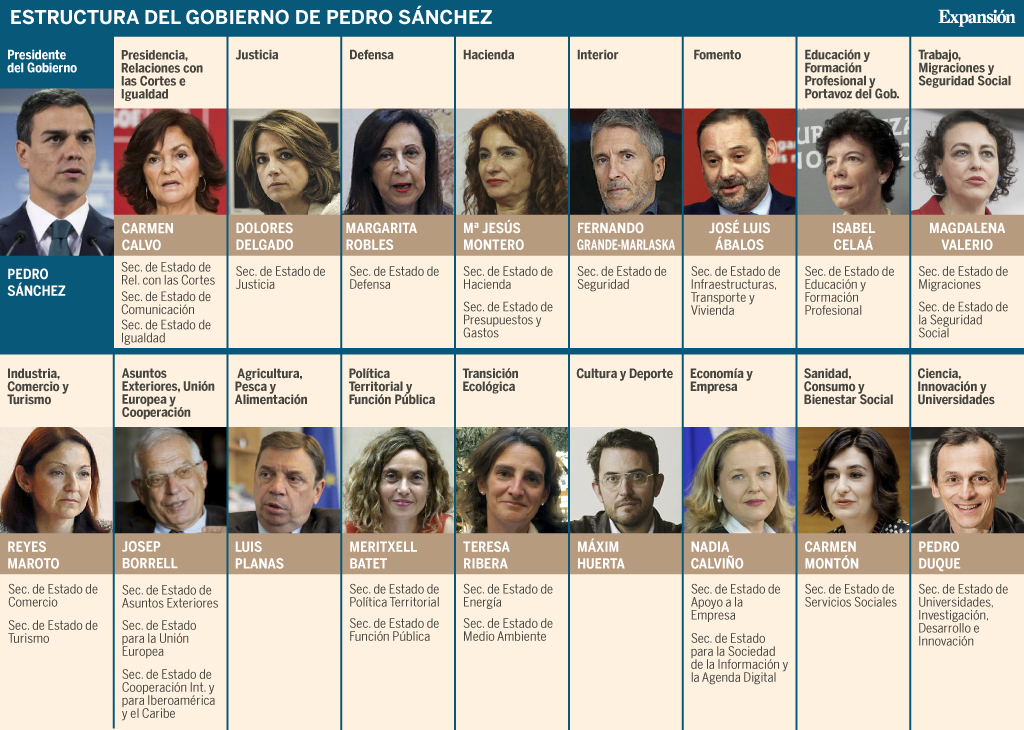SPAIN TODAY
This map shows the location of Spain in the world. Our neighbours are: France in the north, Morocoo in the south and Portugal in the west.
 |  |
Not all Spanish territories are in the Iberian peninsula. Balearic islands are in the Mediterranean Sea, and the Canary islands in the Atlantic ocean, just off the western coast of Africa. Also, there are two Spanish cities in the northern coast of Africa: Ceuta and Melilla.

 |  |  |
| The Canary Islands are seven: La Palma, El Hierro, La Gomera, Tenerife, Gran Canaria, Fuerteventura, and Lanzarote. | The Balearic Islands are five: Formentera, Ibiza, Cabrera, Mallorca, and Menorca. | Ceuta and Melilla are two Spanish territories in the north of Africa. |
A border is a line or frontier that separates one country from another. The borders can be natural or political.
 |  |  |
| The Pyrenees form the natural border between Spain and France. In this image, the lake is in Spain, but the other side of the mountains is French territory. | The strait of Gibraltar is the natural border between Spain and Morocco. In this image, the close land is in Spain, and the one beyond the ocean in Morocco. | This a political border between countries. They agreed to have them where they are. |
Spain is divided into seventeen Autonomous Communities and two Autonomous cities, Ceuta and Melilla.

Also, many Autonomous Communities are made up of different provinces.

Each province is also divided into many smaller municipalities. The next map shows the ones in the Community of Madrid. Some of them (in blue) have also their names written. If you want to find Torrejón de Ardoz on the map, look for Alcalá de Henares. Torrejón is on its left.

In Spain there are more than 8000 municipalities, 50 provinces (with Ceuta and Melilla) and 17 Autonomous Communities.
You can know more about your Autonomous Parliament (Madrid) by clicking on its image.
Games of Spanish geography:
https://mapasinteractivos.didactalia.net/comunidad/mapasflashinteractivos/recurso/provincias-de-espaa-juegos-geograficos/7812c166-98d4-414c-a3e3-68a54df2b8f2
https://online.seterra.com/es/vgp/3077
Do you know why every 6th December is a day off? You don´t go to school that day because we celebrate that Spain is a democracy. Our most important law is the CONSTITUTION. Spanish citizens approved it in 1978, 6th December. That´s why!
Spain is a Parliamentary Monarchy (Parliament + Monarch). This means that King Felipe VI is the Head of State, but he must accept the decisions made by Parliament.

The Parliament of Spain is called Las Cortes. It approves laws and controls the government. The Parliament is made up of two chambers: The Congress of Deputies and the Senate. Their members are elected every four years in general elections by Spanish citizens older than 18 years old.
This video shows how some Southafrican children visited the Parliament of the adults to talk about environmental problems of their country.
The government
 |  |
This building is La Moncloa. It is where the President lives. The President is in charge of the government and must explain the government´s actions to the Congress of Deputies.
The ministers help the President of the Government in many areas: education, health-care, research, defense, culture, economy etc. The next picture show the ministers of Spain in 2017

The Courts of Justice assure that laws are obeyed. They judge anyone accused of commiting a crime.
 |  |  |
| The Supreme Court (Madrid) | The Constitutional Court (Madrid) | This photo shows the Court of Justice in Torrejón de Ardoz. |
![]()

